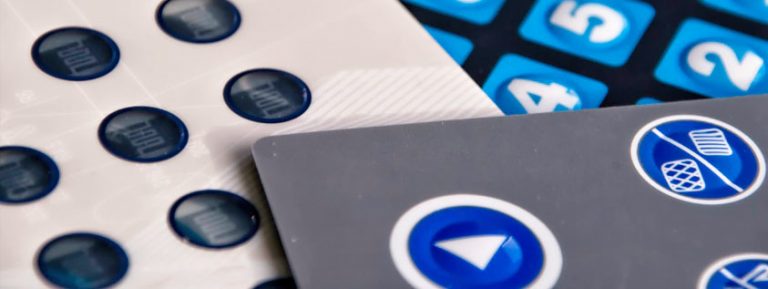Choosing the Best Materials for a Membrane Switch Design
Designing a membrane switch can be a daunting task at times especially when it comes to choosing the best materials for your membrane switch design. There are many different materials to consider when designing the keypad. Below you will find some of the standard materials and components CSI typically uses in our membrane switch designs.

Polyester
The material of choice for membrane keypad overlays due to its superior flex life and chemical resistance
Most common thicknesses are .006”, .007”, .008” and .010”
Certain films are suitable for outdoor use with UV inhibitors for resistance to the UV effects of sunlight.
Available with built-in Microban antimicrobial protection that inhibits growth of bacterial, mold & mildew.
Also available in brushed finish to simulate the look of brushed metal
Special “soft touch” surface finish available to mimic the feel of silicone rubber
Polyester Products
Polycarbonate
Ideal for standalone display windows, overlays without keypads as well as bezel overlays for rubber keypads
Available in textured, antiglare and glossy finishes
Certain films are suitable for outdoor use with UV inhibitors for resistance to the UV effects of sunlight.
Available in an anti-fog coating
Available in thickness ranges from .005” to .030”
Polycarbonate Products
Lexan 8B35 (textured)
Lexan 8B35F (textured)
Lexan 8B35V (textured)
Lexan HP (hardcoated antiglare and glossy)
Lexan HP12W (with UV inhibitors for outdoor use)
Marnot XL Hardcoat Matte Polycarbonate (20, 35, 55, 75 and 90 Gloss Unit matte levels)
Adhesives
3M 200MP High Performance Adhesives
Suitable for high surface energy materials such as aluminum, steel, polycarbonate, ABS, nylon, etc.
Widely used in the membrane switch applications
Available in thicknesses of .002” and .005”. For adhesion to textured surfaces the .005” thickness is recommended.
Service temperature range of -31°F to +300°F for prolonged periods and +400°F for short periods.
Excellent environmental, temperature, chemical and humidity resistance
3M 300LSE High Strength Adhesives
Ideal for adhesion to low surface energy plastics such as powder coated paint and polypropylene
Available I nthicknesses of .002”, .0035”, and .005”. For adhesion to textured surfaces the .005” thickness is recommended.
Service temperature range of -40°F to +200°F for prolonged periods and +300°F for short periods.
Excellent environmental, temperature, chemical and humidity resistance.
